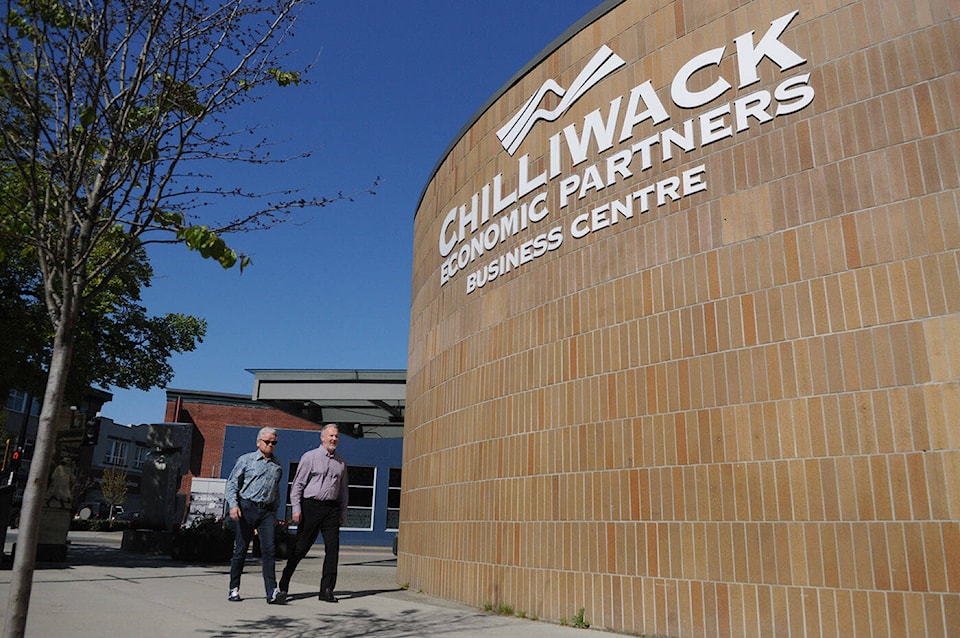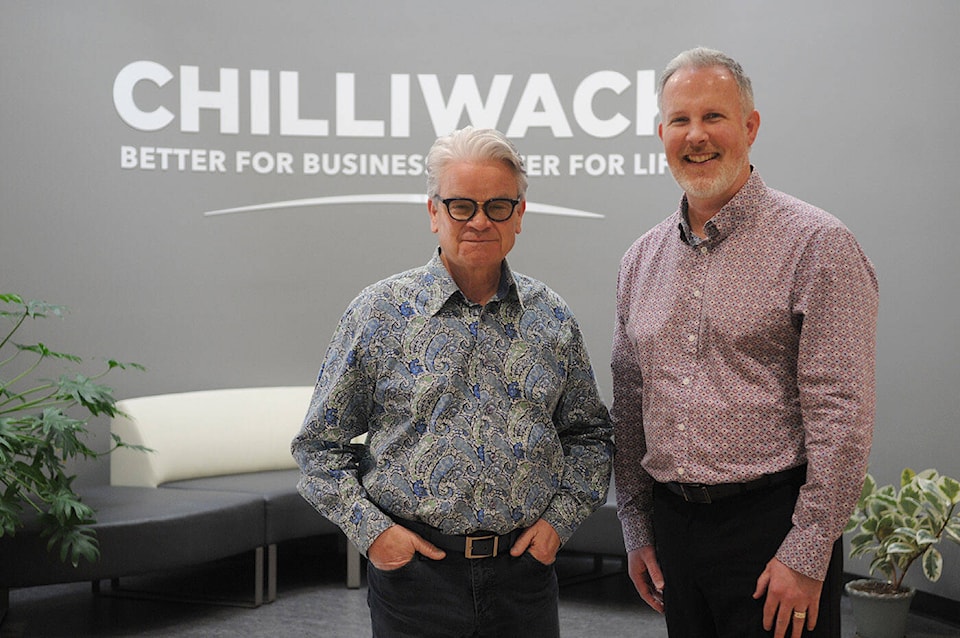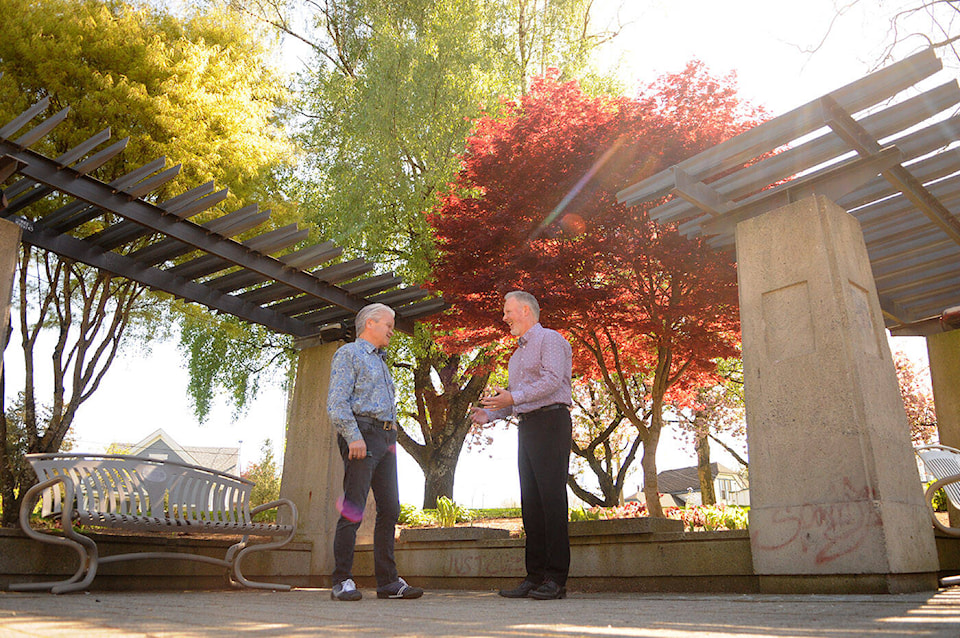When Chilliwack was crowned the second fastest-growing city in Canada with the release of the 2021 census numbers, it was clear an astounding transformation was underway.
The population explosion was fuelled by skyrocketing demand for more affordable housing by those willing to relocate away from uber-expensive Vancouver. A red-hot real estate market with record prices dominated in Chilliwack from 2016 to 2021.
Walking around the streets of Chilliwack today, the impacts of that rapid growth are obvious at every turn.
There is a new vibe in Chilliwack which is inspiring huge interest, investment and a new resurgence of hometown pride.
From the burst of downtown revitalization at District 1881, to pockets of south-side redevelopment at both the Chilliwack Mall and Cottonwood Centre, to the fury of apartment-building construction along Spadina Avenue, and changes to South Vedder and Garrison Crossing neighbourhoods, there is a lot going on.
More than 7,900 people moved to Chilliwack, with a growth rate at 8.4 per cent over a five-year period up to 2021, according to City of Chilliwack numbers.
The Chilliwack Progress sat down with Chilliwack Mayor Ken Popove recently, and Brian Coombes, president of Chilliwack Economic Partners Corporation (CEPCO) to talk about the recent growth, and what’s coming down the pike in the next few years.
“When you talk about economic development and growth, it’s about more than just attracting new businesses,” Coombes said. “For us it’s the high-level view we take in an attempt to pull all the pieces together that make Chilliwack a better place.”
That’s the whole point of the marketing tagline CEPCO adopted a few years ago: “Better for business. Better for life,” to describe all the attractive elements that set Chilliwack apart from competing communities.
CEPCO was founded in 1998 as the City of Chilliwack’s economic-development arm, and it marked a quarter-century of dedicated service last year. CEPCO is guided by a private-sector board of directors representing a diverse range of businesses and experience focused on new business attraction, as well as paying close attention to business retention.
Collaboration and working in partnerships are hallmarks for CEPCO, as well as seeking innovation, and solution-focused approaches. The CEPCO structure is “unique for economic development in British Columbia,” Coombes said, operating as it does independently from the city.
Strategic land assembly, undertaken in partnership with City of Chilliwack led to the creation of the Canada Education Park on the site of the former CFB Chilliwack, and consolidating properties together for the amazing city block that has become District 1881, is a component of CEPCO’s one-of-a-kind model.
Population projections for Chilliwack are forecasting continued growth, with a population of 132,000 estimated between 2035 (at 2.0 per cent per year) and 2040 (at 1.5 per cent per year).
The future is undoubtedly very exciting, and Chilliwack has been recognized as a great place in which to invest or start a business, but it’s “not all sunshine and roses,” Coombes acknowledged.
There are growth constraints that are specific to Chilliwack that they strive to work around.

Coombes pointed to challenges like transit and parking issues, infrastructure needs, a highway expansion still many years away, coupled with a shortage of industrial and commercial zoned land for development.
Mayor Popove pinpointed a key reason for some of those challenges. “We are surrounded by Agricultural Land Reserve land. In fact, 67 per cent of Chilliwack’s land base is agricultural land.” That explains the lack of land available for development.
“So we can’t build out, but we can build up,” Popove said.
That’s partly why people can see so many apartment buildings going up within a couple three blocks of downtown, he said. “And that’s by choice to make it walkable and to keep people out of their vehicles. It’s to make our downtown core available for folks to go see their doctor, going to pick up groceries, or going for a beer.”
And it’s working.
“At one point there were six cranes working in Chilliwack, which was previously unheard of,” the mayor added.
When it comes to the impacts of the new provincial housing legislation however, the mayor said it’s been hard for city council, in its desire to be fair and transparent, not being able to hold public hearings any longer for rezonings when the applications conform to the official community plan (OCP).
While it’s understood as a strategy by the province to speed up municipal approvals and create a lot more housing under its Homes for B.C. plan, the mayor said it has effectively silenced the public in this regard.
“It puts every community into one box,” said Popove about provincial plan. “We need to stay ahead of growth and that is the challenge with the direction the province is taking.”
In the post-pandemic years, CEPCO officials have also taken pains to recognize that local businesses are truly struggling, that it is tough to survive amidst the combined effect of inflation, high interest rates, workforce, and government regulations - all of which have hiked costs, Coombes underlined.
There are strong factors working in Chilliwack’s favour.
“We are not a bedroom community,” Coombes underlined.
“Chilliwack is not just a suburb of metro Vancouver. We’re a very distinct community, and that is attractive to people, and has helped fuel our growth.”
Part of managing the growth is the importance of diversifying the economy. Goals also include continuing to foster respectful relationships with First Nations, environmental sustainability, along with tax base enhancements.
Bringing the right mix of investors, entrepreneurs, remote workers and businesses to the table is crucial, since that is the bridge between population growth and the economy. Small and medium local businesses are vital to the fabric of the local economy as well, as they contribute to a strong mix of offerings for a growing community.
Adding to that is a vital and rising class of creatives, green tech, manufacturing, agriculture, food processing, tourism operators and more sub sectors springing up.
“The rise in population is needed to support the growth in the retail, service, dining sectors, and more,” Coombes said.
“It’s also important with downtown revitalization, and beyond. For example just drive down Spadina Avenue and see that much more residential density coming.”
“Those are the people who will be supporting the businesses, and as our population grows, it means more opportunities.”
What’s next? From the detailed Strategic Plan 2024 the CEPCO board approved last November, it’s clear the manufacturing and food-processing sectors are poised to continue as growth sectors.
“Our community has a diverse and successful manufacturing sector that includes a wide range of businesses that specialize in state-of-the-art product development.”
The plan states that “synergies and supply chain benefits” are being accrued between many of these businesses through specialized equipment development, techniques, and workforce training.
“This presents some very interesting ongoing opportunities for manufacturers.”

At the same time the goal of bringing back food processing to the community is taking shape in a major way.
“Historically, Chilliwack was home to a range of food processing companies that eventually ceased operations. Based upon the importance of agriculture for our community and province, the City of Chilliwack created an Agricultural Food Processing (AFP) zone and business park in 2004 to once again attract food and beverage processing investment into our community.”
Since then there has been “considerable” investment in the processing zone is from major companies such as Five Corners Meat Company (Pattison Group), Berryhill Foods, Puratos, Molson Coors, and Red Bull.
“Food and beverage processing remains a significant opportunity for creating employment in Chilliwack,” the strategic plan explained.
Having Molson Coors, one of Canada’s oldest companies, decisively choose Chilliwack over many other potential locations to build the multi-million dollar brewery did not go unnoticed. It helped a multi-billion-dollar international company like Red Bull make their own decision to build a pre-mix plant in Chilliwack, and together they pack a powerful punch on the attraction front.
“That sends a strong message,” Coombes said. “It shows we are attractive community for investment in a very connected economy. The Fraser Valley is experiencing growth on a regional scale, because this is where the opportunities exist.”
READ MORE: Red Bull chooses Chilliwack site to build new facility next year
To see this story as it ran in our special section on April 26, 2024 see our e-edition here: Chilliwack in Progress
